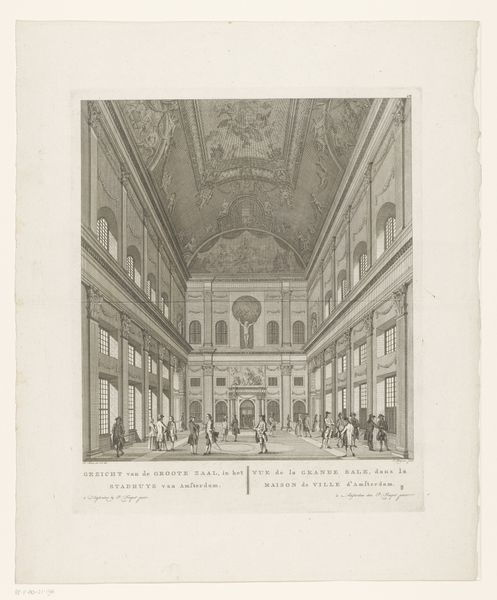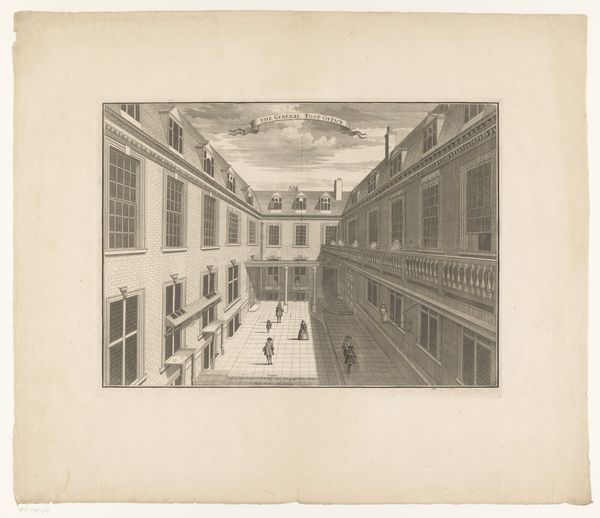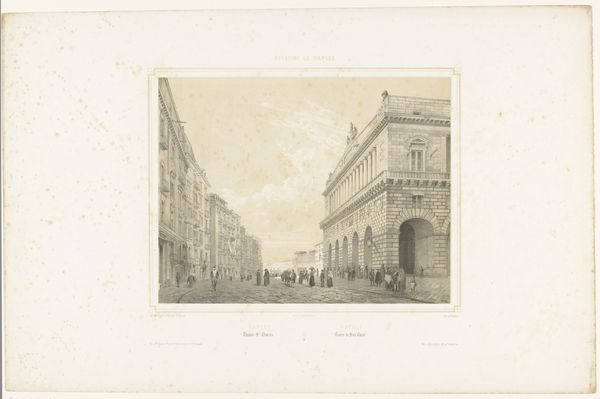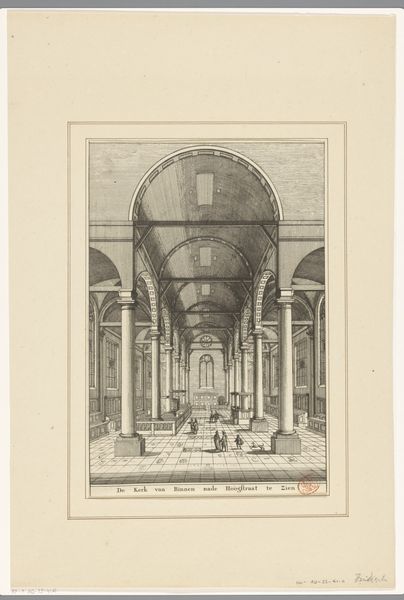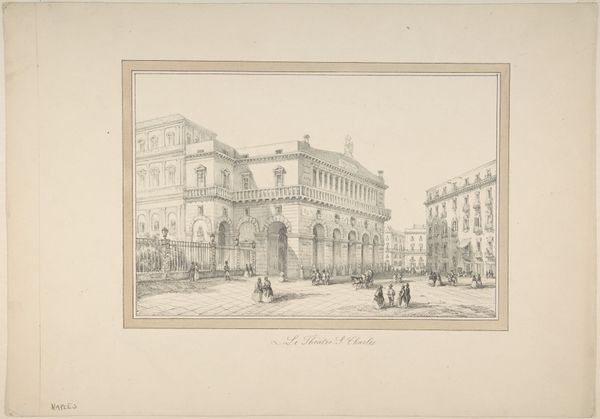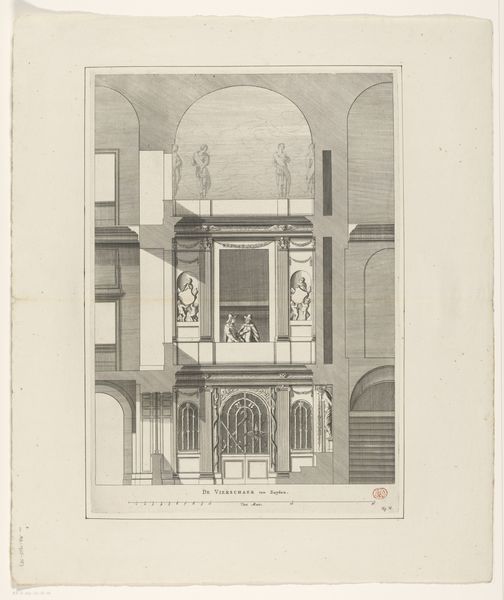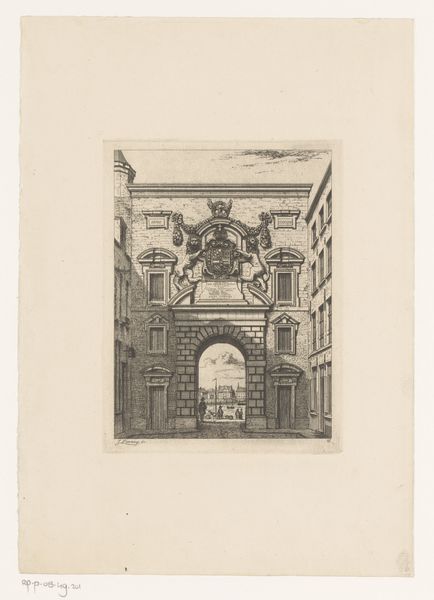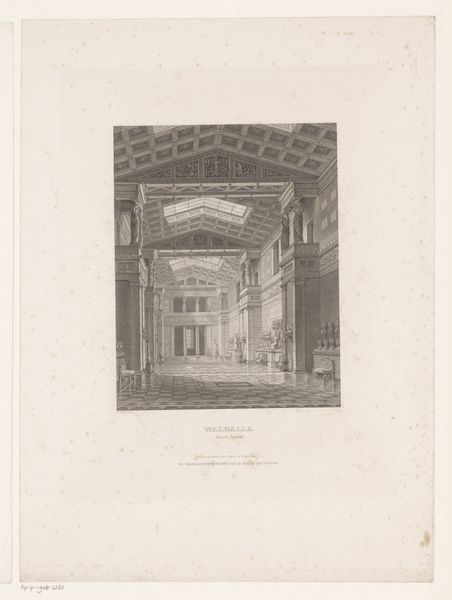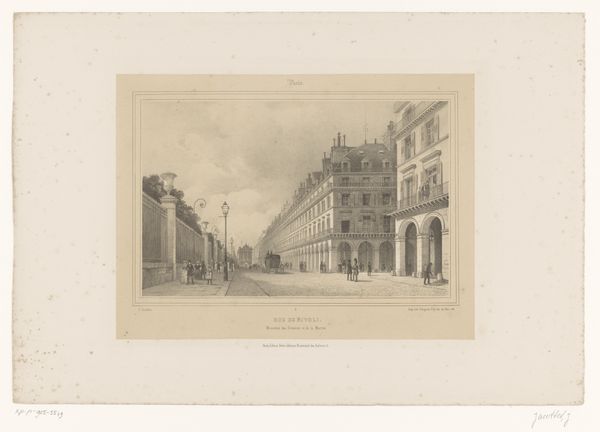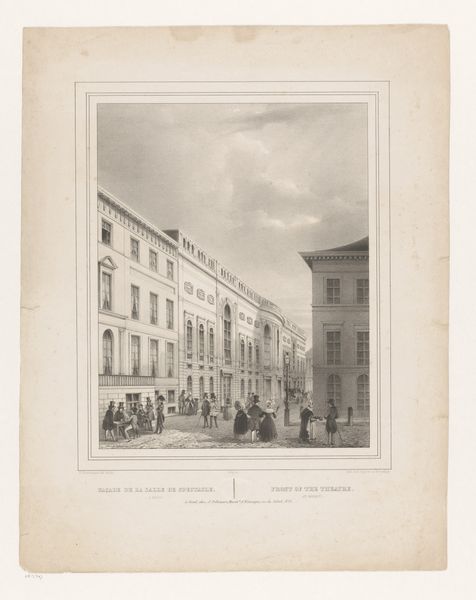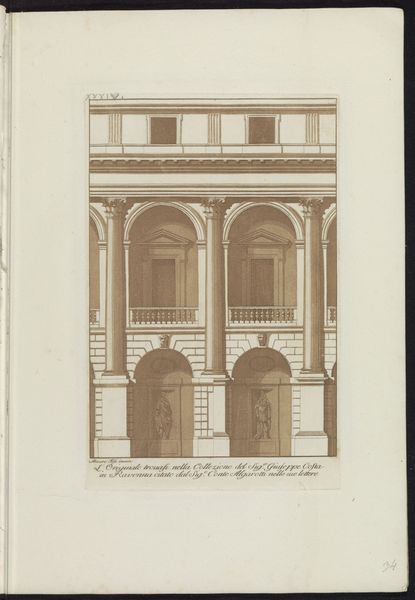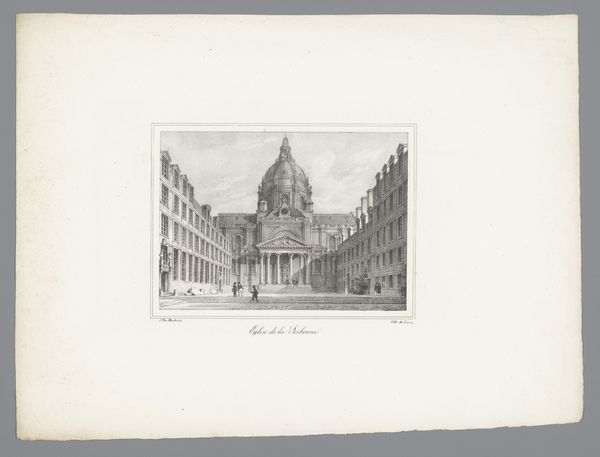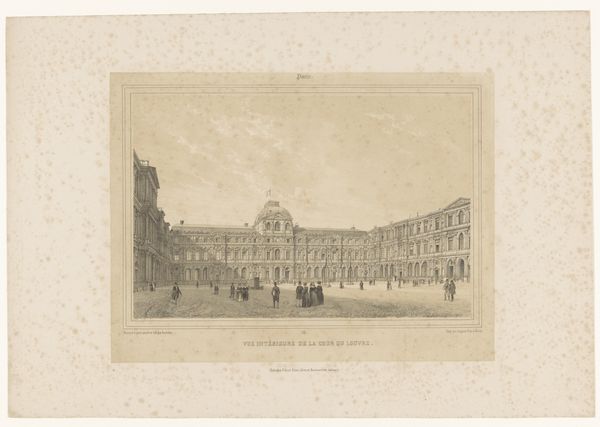
print, etching, engraving, architecture
#
16_19th-century
# print
#
etching
#
cityscape
#
engraving
#
architecture
#
realism
Dimensions: height 365 mm, width 277 mm
Copyright: Rijks Museum: Open Domain
Here is the story about the artwork to be used as an audio guide: Henri Borremans captured the interior of the Royal Saint-Hubert Galleries in Brussels with delicate strokes. Notice the oculus at the Gallery's center, an eye-like aperture that gazes down upon the promenading figures. This motif is not new. In ancient Roman architecture, the oculus served as a direct connection to the heavens, allowing light and, symbolically, divine wisdom to enter sacred spaces. In the Pantheon in Rome, for example, the oculus is a powerful reminder of cosmic order. Later, during the Renaissance, the oculus was revived, gracing domes of churches and palazzos, signifying enlightenment and intellectual awakening. Think of the Camera degli Sposi in Mantua, where the oculus becomes a playful trompe-l'oeil. The presence of this motif, even within a commercial space, suggests an enduring human fascination with light, knowledge, and the transcendental. It is a symbol, passed down through the ages, subtly influencing our perception and experience of space.
Comments
No comments
Be the first to comment and join the conversation on the ultimate creative platform.
